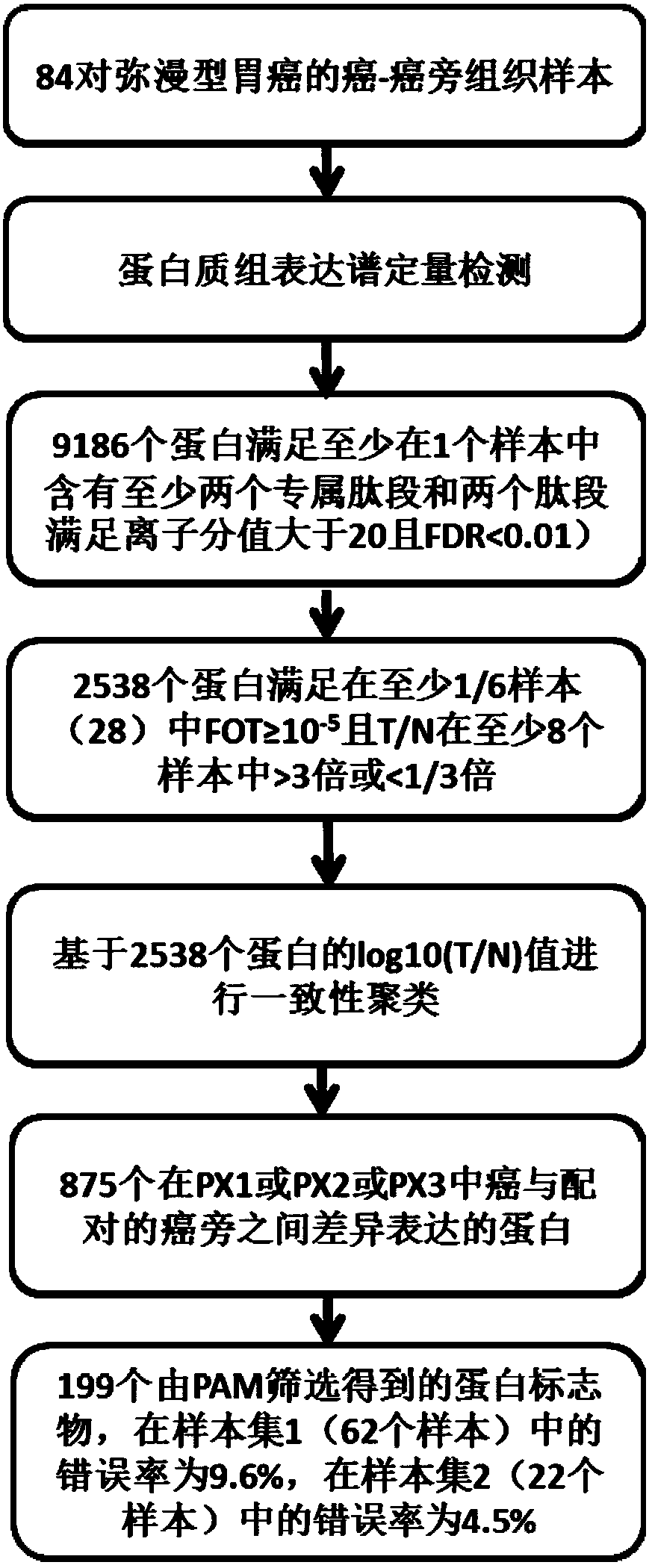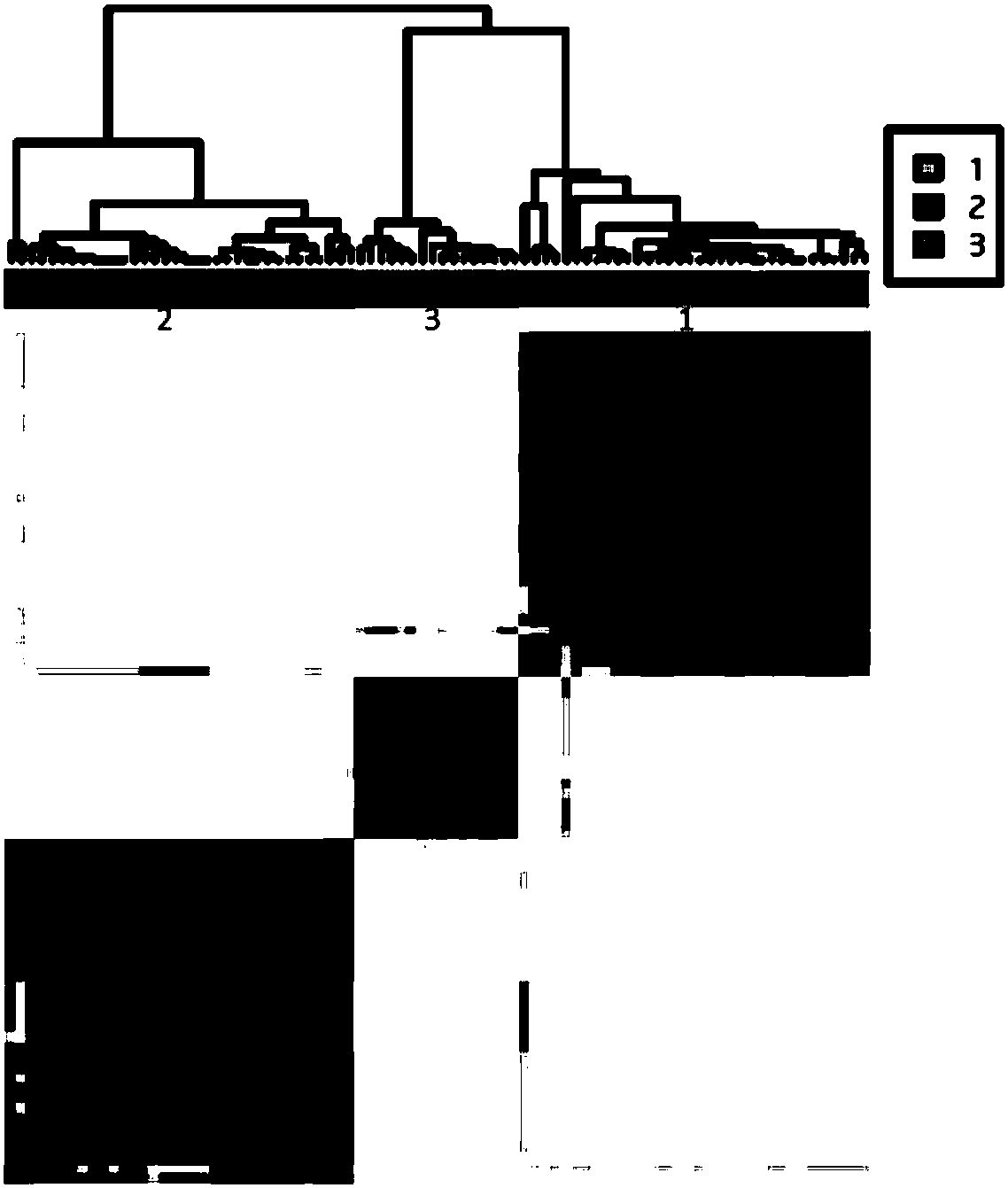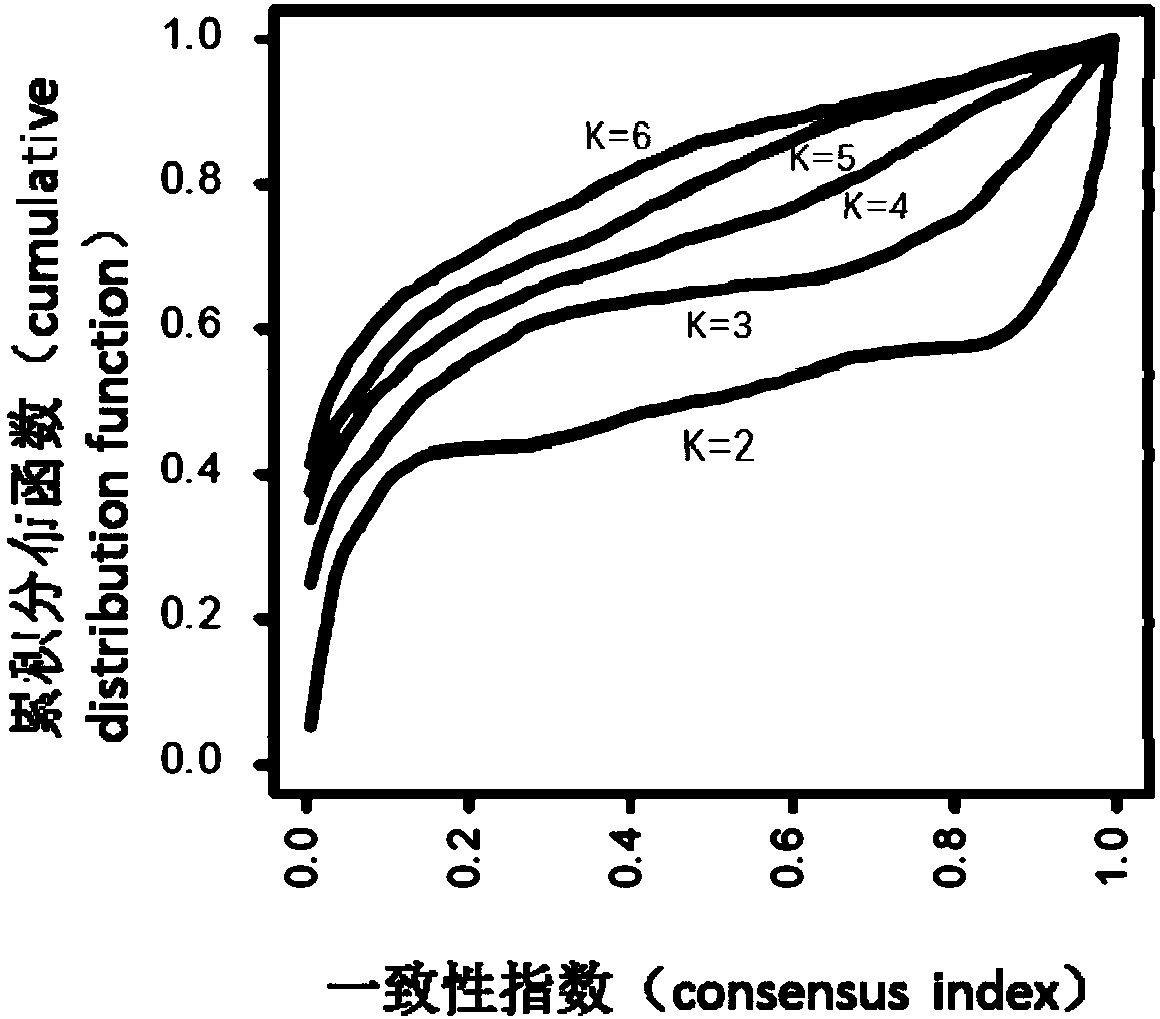Molecular typing of diffuse gastric cancer and protein markers for typing and screening method and application thereof
A technology of protein markers and molecular typing, applied in the direction of material separation, analysis of materials, measurement devices, etc., can solve the problem of no further research on subtypes
- Summary
- Abstract
- Description
- Claims
- Application Information
AI Technical Summary
Problems solved by technology
Method used
Image
Examples
preparation example Construction
[0083] 2. Preparation of gastric cancer protein samples
[0084] In the present invention, "sample" specifically refers to collected tissue samples, and those used for detection are called "sample".
[0085] 1. Weigh the empty EP tube and mark it. Each pair of cancer tissue (Tumor, T) and paired adjacent normal tissue (Nearby tissue, N) samples were guaranteed to be processed in parallel at the same time. After the tissue samples were taken out from -80°C, they were first weighed in EP tubes, checked and recorded, and buried in ice boxes. Add about 5 times the volume of 8M Urea protein lysate into the EP tube, add PMSF at the same time, use a disposable grinding rod to crush, and then perform ultrasonic lysis for one minute (3 seconds start, 3 seconds interval, amplitude 25%), and then placed in Lyse on ice for 15 minutes with occasional bouncing.
[0086] 2. Centrifuge the lysate at 14,000 g at 15°C for 10 minutes, pipette the supernatant into a new EP tube, and record t...
Embodiment 1
[0143] This example illustrates the process of establishing a proteome expression profile data set of gastric cancer patients and adjacent cancers. The process of building a dataset includes:
[0144] 1. Collection of gastric cancer samples: select cancer and paracancerous tissues from patients with diffuse gastric cancer who did not receive neoadjuvant radiotherapy and chemotherapy before surgery. It is required that the tumor cell content exceeds 50% and there are no tumor cells in the paracancerous tissues. The collected cancer tissues and paracancerous tissues are collectively referred to as gastric cancer samples.
[0145] 2. Gastric cancer protein sample preparation.
[0146] (1) Weigh the empty EP tube and mark it. Each pair of cancer tissue (Tumor, T) and paired adjacent normal tissue (Nearby tissue, N) samples were guaranteed to be processed at the same time. After the tissue samples were taken out from -80°C, they were first weighed in EP tubes, checked and record...
Embodiment 2
[0167] This example illustrates how to use a classifier to carry out molecular typing of patients with diffuse gastric cancer.
[0168] The molecular typing process includes:
[0169] 1. Collect the protein expression profile data of diffuse gastric cancer and adjacent cancer.
[0170] 2. Screen the FOT value of protein quantification corresponding to all samples, and the quantified protein is required to contain at least two unique peptides (unique peptides), and the ion score (ion score) is greater than or equal to 20.
[0171] 3. Make the FOT value less than 10 -5 Use 10 for the value -5 replace.
[0172] 4. Obtain the log of each protein FOT 10 (T / N) value.
[0173] 5. Use the model of the composition of these 199 proteins, that is, the centroid values of the 199 proteins in the three subtypes (Table 5) for prediction: calculate the rank correlation coefficient (Spearman's rank correlation), classify this sample into the subtype with the highest rank correlation co...
PUM
 Login to View More
Login to View More Abstract
Description
Claims
Application Information
 Login to View More
Login to View More - R&D
- Intellectual Property
- Life Sciences
- Materials
- Tech Scout
- Unparalleled Data Quality
- Higher Quality Content
- 60% Fewer Hallucinations
Browse by: Latest US Patents, China's latest patents, Technical Efficacy Thesaurus, Application Domain, Technology Topic, Popular Technical Reports.
© 2025 PatSnap. All rights reserved.Legal|Privacy policy|Modern Slavery Act Transparency Statement|Sitemap|About US| Contact US: help@patsnap.com



